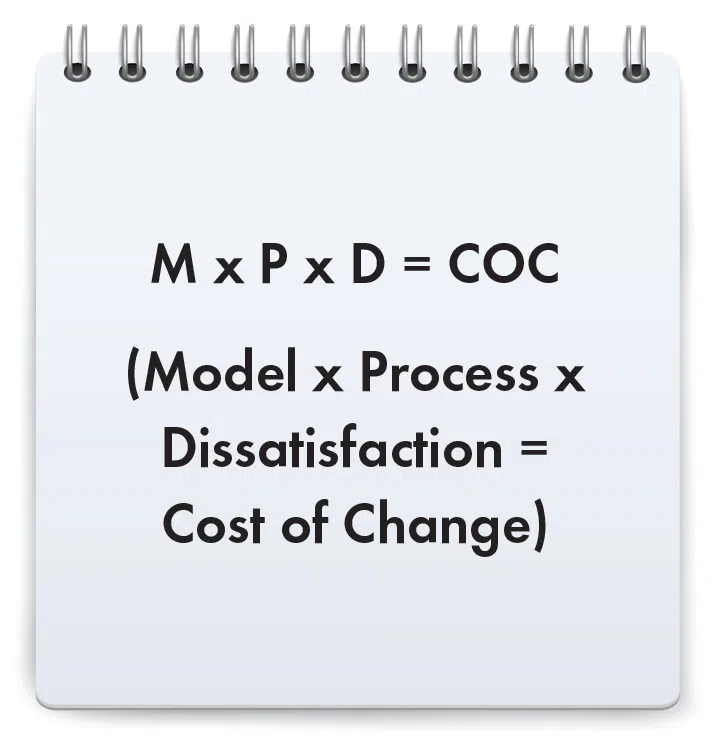Building a dynamic and highly profitable hvac retail business with residential service agreements.
In the September issue Jackie Rainwater and I introduced readers to the lucrative world of service agreements. For the second installment, I will discuss and recommend specific steps required to get your company moving toward a highly successful residential service-agreement program.
It is important to start with a structured and organized approach. A high percentage of contractors have a service-agreement program, but a surprisingly small percentage of contactors have been successful with their programs. In fact, I have seen many contractors experience service agreement “false starts,” which result in dwindling enthusiasm for the program.
Once you’ve decided to embark on a successful service-agreement journey, there are several initial steps you must take. Next month, the final installment of this series will help you fine tune your approach. For now, I ask that you focus on this logical and sequential order:
Owner Buy-In
Without complete commitment and understanding of a service-agreement program by the owner, as well as other company leaders, the program will not succeed.
In all companies, the owner sets the example. Other leaders and co-workers emulate and follow their lead. As mentioned last month, the owner must exhibit the same enthusiasm for a $150 service agreement sale as a $15,000 equipment replacement sale. The owner and other leaders must remember that service agreements are an investment in the future.
Indeed, if properly serviced and marketed, your company will achieve an annual average of over $700 per service agreement customer with very little price resistance and minimum marketing costs.
Company leaders that have the proper commitment and enthusiasm can create and maintain a service-agreement culture within the entire company.
To ignite enthusiasm with new consulting clients, I always insist that the company owner be the first to invest in a service agreement. By signing as the homeowner on an agreement that has been presented by one of the company’s service technicians, it forges confidence that the program is important.
To serve as a constant reminder, the signed agreement, as well as a copy of the personal check made out to the company, is framed and displayed in a prominent area in the company office. By doing so, the owner has sent an obvious message to other co-workers that this program has his seal of approval. The owner also should encourage other leaders to do likewise.
Technician Training
How to perform a quality precision tune-up and professional cleaning is a crucial step to the program’s success. Residential service agreements should include two precision tune-ups per year.
You may be surprised how you determine the technician field procedures in performing tune-ups. You shouldn’t be the one telling technicians what a tune-up should include. Instead, ask them what the best procedures are.
Here is how it is accomplished: In a meeting (budget at least two hours) with all technicians ask, “If we are going to be serious about a service-agreement program (or if you already have a service agreement program, the question can be posed as “a new service-agreement program”) and we want to perform the very best, highest quality tune-up in the area, what exactly should we do?”
To facilitate the discussion, use a whiteboard and make three columns: “What should we do?” “How should we do it?” and “Approximately how much money could a customer save each year?”
In this first meeting address only air conditioning tune-up procedures. In another meeting you can address heating tune-up procedures.
The management technique just explained: Thinking leads to involvement, involvement leads to commitment. By asking technicians to help you come up with the solution, you are involving them in the process. When you finalize the initial steps of the program and start actively selling service agreements and performing the tune up procedures that they helped determine, they will cooperate in selling them — it is their program because they were involved in the decision-making process.
A typical meeting often goes like this: Let’s suppose the first “What should we do?” answer is “Clean the condenser coil.” Put that answer on the whiteboard and move to the next question, “How should we do it?” Eventually, a decision will be made on the very best procedure and the best product to use.
Two things have already happened, you now have the best procedure for cleaning condenser coils and you have a policy for how everyone in the company now cleans condenser coils.
The last question on condenser coils: “Approximately how much money could a customer save each year?” The technicians will give you a range and the number will be significant. Continue the meeting by listing all of the technicians’ tune-up information in the three columns. Total the approximate annual savings — you’ll be amazed by the dollar amount.
Indeed, I have gone through this training exercise with service technicians literally hundreds of times and their approximate annual savings has always exceeded the customer’s dollar investment in the service agreement. This is a powerful marketing tool.
Once you’ve arrived at the best procedures, you can call them precision tune-ups, professional cleanings, and safety inspections — rather than simply tune-ups, or clean and checks or inspections.
Keep in mind that what is mapped out on the whiteboard is exactly what must be delivered to your customers. Otherwise the technicians were simply manipulated.
Support Staff Training
There are several administrative duties associated with service agreements. This means that the inside support staff must have the required processes in place to record new service agreements, pre-schedule tune-ups in the determined months, work closely with customers
in scheduling, route the collected payments for deposit, track spiffs (or commissions), track sales leads generated by service technicians, and process the renewals of service agreements.
This is an area that has certainly contributed to “false starts” in service-agreement programs because of its lack of attention. It is very important that you have the processes in place and that the support staff is well trained in their use.
Pricing Strategy
Your pricing must address two products: First, non-service-agreement tune-ups, second, service agreements.
Marketing and performing non-service-agreement tune-ups is the most effective method of selling service agreements. It places your technicians in the home and gives the customer first-hand experience with your expertise. Once you’ve gained their confidence, you can sell them yearly service agreements.
Let’s suppose, as an example, you would like to market non-service-agreement tune-ups at a 65% gross profit and your calculations produce a sales price of $84. With this information, the decision is made to price the tune-ups at a list price of $89. This allows you to offer them a discounted price of $79. (I have marketed non-service-agreement tune-ups in the $69 to $89 range for many years and have, as a result, literally sold thousands of service agreements.)
Staying with the $79 example, what about customers who have two or more systems? If the value of a tune-up on system No. 1 is $79, the value of a tune-up on any additional systems should be $79.
Many contractors make the mistake of offering a second system tune-up for a lot less than $79 because “they are already there” — this is not necessary and lessens the value of the tune-up.
After determining the sales price of non-service- agreement tune-ups you can use them as a base to price the service agreements. As a result, service agreements will produce about the same gross profit. It is very important that you do not price your service agreements at a lower incremental number than the non-service agreement tune-ups.
Let’s use the non-service-agreement example of $89, which is often discounted to $79. Continuing on, suppose your service agreements include two precision tune-ups per year — totaling $158. If your service agreements are priced at or more than $158, you will sell fewer service agreements and risk offending your service-agreement customers when they see you marketing non-service-agreement tune-ups at $79. It is very easy for them to forget they are getting a lot more benefits than just the two tune-ups each year (Refer to the first article in the September issue). As a result, they will not be happy.
For an example of a Service Agreement Investment, see the chart below.
.jpg)
The example pricing matrix in the chart covers only the air conditioning and heating system(s). With many customers, that is all that is required. However, an increasing number of homes also have system accessory products such as electronic air cleaners, media filters, ultra violet air purification systems, and humidifiers. You must develop your service agreement add-on pricing for the accessory products. The price for those products is simply added to base pricing.
Of course, your company’s pricing of non-service-agreement precision tune-ups and service agreements, as well as all other products, is determined by you based on prevailing wages and other local conditions.
Service Agreement Document
There are many names for service agreements (the form signed by the customer and company representative) including energy saving agreements, maintenance agreements, service agreements, money saving agreements, service contracts, and maximum comfort agreements. Two sample agreements are presented to the right.
Co-worker Spiffs
Co-workers will be enthusiastic and do what you want them to do when they share in the rewards. A spiff (commission) program for the sale and renewal of service agreements fits this principle perfectly. I recommend paying technicians $10 per system per year. Consequently, a one-system one-year agreement pays $10, a one-system three-year agreement pays $30, and a two-system two-year agreement pays $40. If a technician renews an agreement, I recommend paying the same spiff as a new agreement.
To recognize and reward inside service and service-agreement support staff I recommend allocating an additional $3 for each agreement sold. These funds are split evenly among the support staff. All spiffs are paid once monthly on a separate payroll check.
I am a huge fan of processes and systems. They are critical to the success of a company. Also, it is the responsibility of management to make things as easy as possible for both customers and co-workers.
Next month’s article will present more information including marketing and getting service agreements, benchmarks, converting service calls and precision tune-ups to service agreements, and how to renew service agreements.
Until then, here’s to a successful start for your service-agreement program.
Also in this series
Converting Theory Into Practice (November Issue)
How To Build A Dynamic & Highly Profitable HVAC Retail Business With Service Agreements (September Issue)

.webp)
.jpg)


